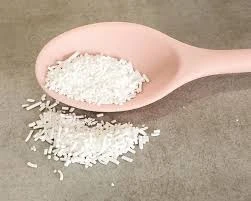
emulsifier e 471
Understanding Emulsifier E471 Properties, Uses, and Safety
Emulsifiers play a critical role in the food industry and beyond, serving as agents that help mix two immiscible substances, such as oil and water. Among the various emulsifiers available, Emulsifier E471—often referred to as mono- and diglycerides of fatty acids—stands out for its versatility and widespread application. This article explores the properties, uses, and safety aspects of E471, helping consumers understand this common food additive.
What is Emulsifier E471?
E471 is derived primarily from vegetable oils and animal fats. It is composed of mono- and diglycerides, which are formed through the glycerolysis of triglycerides. In simple terms, E471 results when the three fatty acids in a fat molecule are partially broken down, resulting in molecules that can interact with both fatty substances and water. This unique ability makes E471 an effective emulsifier, stabilizer, and thickening agent.
Properties of E471
The chemical structure of E471 allows it to function as an interface between oil and water. It reduces the surface tension between these two phases, promoting a stable mixture. This property is crucial in a variety of food products where consistent texture and uniformity are desired. Additionally, E471 is relatively heat-stable, meaning it can withstand the high temperatures often required during food processing without losing effectiveness.
Furthermore, E471 is tasteless and odorless, making it an attractive choice for food manufacturers who want to improve product quality without altering flavor. It is also soluble in both fat and water, facilitating its use in diverse recipes and products.
Applications in Food Industry
emulsifier e 471

E471 is found in many processed foods, including margarine, baked goods, ice cream, and salad dressings. In baked goods, it helps to improve dough stability, texture, and volume. In ice cream, it contributes to a creamier mouthfeel and prevents the formation of ice crystals, enhancing the overall experience. In margarine and spreads, E471 assists in maintaining a consistent texture and prevents separation, ensuring a pleasing product for consumers.
Beyond food, E471 is also utilized in cosmetics and pharmaceuticals, where it acts as an emulsifying agent in creams and lotions. Its ability to stabilize emulsions makes it valuable in formulating products that require a smooth and consistent texture.
Safety and Regulatory Status
The safety of E471 has been evaluated by numerous food safety authorities worldwide, including the European Food Safety Authority (EFSA) and the Food and Drug Administration (FDA) in the United States. Studies have shown that E471 is generally recognized as safe (GRAS) when consumed in typical dietary amounts. It is also deemed non-toxic and does not pose any significant health risks when used within the recommended levels.
Despite its safety profile, some individuals may have concerns regarding the source of E471, as it can be derived from both plant and animal fats. For vegans or those with dietary restrictions, it's essential to check product labels to determine the origin of the emulsifier used.
Conclusion
Emulsifier E471 is an essential ingredient in modern food processing and offers numerous benefits for both manufacturers and consumers. Its ability to enhance texture, stability, and shelf life makes it a popular choice in many products. With a solid safety record, E471 can be enjoyed as part of a balanced diet, provided that individuals remain informed about its sources and applications. As the food industry continues to evolve, substances like E471 will remain vital in delivering quality products that meet consumers' needs and preferences.
-
Pure Sodium Dichloroisocyanurate Dihydrate | Powerful DisinfectantNewsAug.29,2025
-
Industrial Chemicals: Quality & Purity for Every IndustryNewsAug.28,2025
-
Nitrile Rubber Honoring Strict Production StandardsNewsAug.22,2025
-
Aspartame Ingredients Honoring Food Safety ValuesNewsAug.22,2025
-
Fertilizer for Balanced Plant NutritionNewsAug.22,2025
-
Cyanide Gold Processing with High Purity AdditivesNewsAug.22,2025
-
Formic Acid in Textile Dyeing ApplicationsNewsAug.22,2025
Hebei Tenger Chemical Technology Co., Ltd. focuses on the chemical industry and is committed to the export service of chemical raw materials.
-

view more DiethanolisopropanolamineIn the ever-growing field of chemical solutions, diethanolisopropanolamine (DEIPA) stands out as a versatile and important compound. Due to its unique chemical structure and properties, DEIPA is of interest to various industries including construction, personal care, and agriculture. -

view more TriisopropanolamineTriisopropanolamine (TIPA) alkanol amine substance, is a kind of alcohol amine compound with amino and alcohol hydroxyl, and because of its molecules contains both amino and hydroxyl. -

view more Tetramethyl Thiuram DisulfideTetramethyl thiuram disulfide, also known as TMTD, is a white to light-yellow powder with a distinct sulfur-like odor. It is soluble in organic solvents such as benzene, acetone, and ethyl acetate, making it highly versatile for use in different formulations. TMTD is known for its excellent vulcanization acceleration properties, which makes it a key ingredient in the production of rubber products. Additionally, it acts as an effective fungicide and bactericide, making it valuable in agricultural applications. Its high purity and stability ensure consistent performance, making it a preferred choice for manufacturers across various industries.





